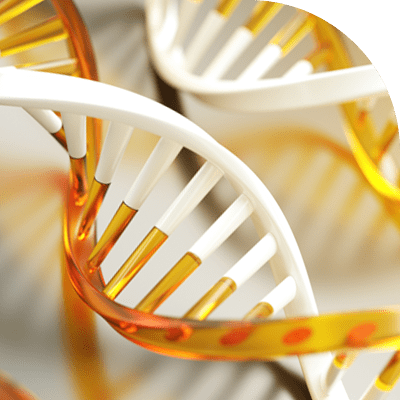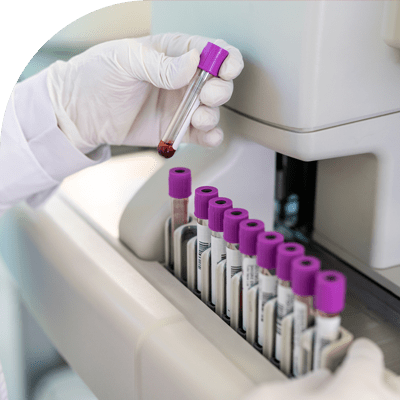The 9 Hallmarks of Aging

A landmark paper
In 2013 a team of researchers attempted to identify and categorized the cellular and molecular hallmarks of aging.
They broke down the causes of aging into 9 distinct scientific “hallmarks” and explained how these interact with each other to drive the onset of age-related diseases.
Today there are multiple available therapies, and many more being researched, that use this framework to directly intervene against the aging process.
Read the article9 Hallmarks
Genomic Instability
Impact on Aging
Genomic instability is a fancy way of describing accumulation of DNA damage. As cells age, their chromosomes become less stable. As repair mechanisms fail to correct DNA damage, mutations accumulate and lead to aging and disease. Genomic instability is a key hallmark of aging.
Currently available beneficial therapies:
Metformin, LDN, NAD+ Injection, NAD+ Patch, Infinite Longevity Support
Telomere Attrition
Impact on Aging
As cells divide, the telomere ends of chromosomes get shorter. Eventually, the enzyme that adds telomeric repeat sequences, telomerase, gets silenced and the telomeres are too short for cells to divide.
Currently available beneficial therapies:
Infinite Longevity Support
Epigenetic Alteration
Impact on Aging
Epigenetic Alteration refers to damage that alters the interpretation of the genome, and not the sequence of the DNA. This happens as cells are exposed to environmental factors, and such changes accumulate over time. This has been correlated with the decline observed in aging cells.
Currently available beneficial therapies:
Metformin, NAD+ Injection, NAD+ Patch, Infinite Longevity Support
Loss of Proteostasis
Impact on Aging
As cells age, environmental stresses add up and mechanisms responsible for maintaining proper protein composition (autophagy) start to decline. Proteins lose their stability, autophagic processes start to fail, and misfolded proteins accumulate.
Currently available beneficial therapies:
LDN, Infinite Longevity Support
Deregulated Nutrient Sensing
Impact on Aging
Metabolic activities can put stress on our cells. Too much activity, and changes in nutrient availability and composition cause cells to age faster. Metabolism and its byproducts, over time, damage cells via oxidative stress, ER stress, calcium signaling, and mitochondrial dysfunction. Therefore, organisms depend on multiple nutrient sensing pathways to make sure that the body takes in just the right amount of nutrition – not too much, not too little.
Currently available beneficial therapies:
Metformin, Infinite Longevity Support
Mitochondrial Dysfunction
Impact on Aging
As cells age, their mitochondria start to lose their integrity due to the build-up of oxidative stress. Compromised mitochondrial function leads to a number of events, such as increased apoptosis induction, that correlate with aging.
Currently available beneficial therapies:
LDN, NAD+ Injection, NAD+ Patch, GSH Injection, GSH Patch, Infinite Longevity Support
Cellular Senescence
Impact on Aging
Cellular senescence is the point at which our cells stop dividing and growing due to damage or lack of necessary components. As cells age, they lose their ability to actively divide and start to undergo senescence.
Currently available beneficial therapies:
Metformin, NAD+ Injection, NAD+ Patch, GSH Injection, GSH Patch, Infinite Longevity Support
Stem Cell Exhaustion
Impact on Aging
As we age, our stem cells eventually lose their ability to divide. Furthermore, we are unable to replace the stem cells that have migrated, differentiated, or died. As a result, we show outward symbols of aging, such as grey hair.
Currently available beneficial therapies:
Infinite Longevity Support
Altered Intercellular Communication
Impact on Aging
Cells, as they age, show an increase in self-preserving signals that result in damage elsewhere. Altered intercellular communication with aging contributes to decline in tissue health.
Currently available beneficial therapies:
Infinite Longevity Support
Research in progress
While the currently available age prevention (and potentially age reversing) treatments available to the public are limited to products like Metformin and NAD+ infusions, this is rapidly changing. There are many more promising therapies and technologies under development.
A few that are further along include:
- GAIM
- DTL201/DTL151
- Sarconeos
- SkQ1
- Elamipretide
- GS010
- UBX0101
- Fisetin
- MSC Therapy
- Wnt pathway
- HSC Favtors

